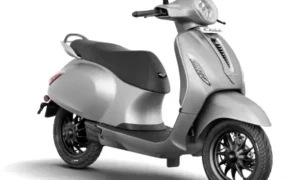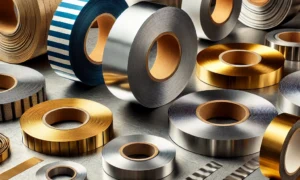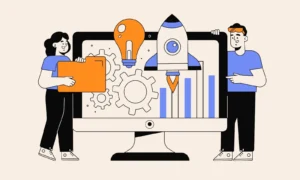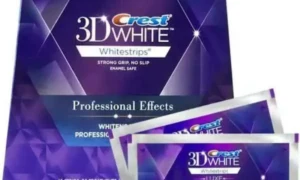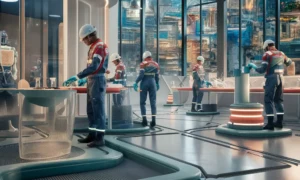In today’s competitive marketplace, the ability to effectively communicate the technical specifications of products is more important than ever. Consumers and business buyers alike demand detailed, accurate, and engaging information to make informed purchasing decisions. One of the most powerful tools available for this purpose is 3D product animation. By leveraging the capabilities of 3D product animation, companies can create compelling visualizations that bring technical specifications to life, making them easier to understand and appreciate. This blog will explore the benefits, applications, and best practices of using 3D product animation to visualize technical specifications.
The Power of 3D Product Animation
Enhancing Understanding
One of the primary benefits of 3D product animation is its ability to enhance the understanding of complex technical specifications. Traditional methods of conveying technical details, such as text descriptions and static images, can often fall short in conveying the full scope and intricacies of a product. 3D product animation, on the other hand, can illustrate these details in a dynamic and interactive manner.
For instance, consider a piece of industrial machinery with intricate internal components. A 3D product animation can provide a virtual tour of the machine, highlighting each component and demonstrating how they work together. This level of detail helps viewers grasp the functionality and advantages of the product more effectively than written descriptions or still images alone.
Engaging the Audience
Engagement is key to successful communication, and 3D product animation excels in this regard. Animated visuals are inherently more captivating than static ones, drawing viewers’ attention and keeping them interested. This increased engagement is particularly valuable when presenting technical specifications, which can often be dry and difficult to digest.
Moreover, 3D product animations can be tailored to different audience segments. For example, a detailed technical breakdown might be created for engineers and technical experts, while a more high-level overview could be designed for potential customers or investors. By customizing the animation to the needs of the audience, companies can ensure that the information is both relevant and accessible.
Realism and Accuracy
Accuracy is critical when visualizing technical specifications, and 3D product animation delivers on this front. Modern 3D modeling software allows for precise representations of products, down to the smallest detail. This realism is essential for building trust with the audience, as it assures them that the visualization is a true reflection of the actual product.
In addition to visual accuracy, 3D product animations can also simulate real-world conditions and behaviors. For example, an animation of an electronic device could show how it responds to different inputs, or how it performs under various environmental conditions. This level of detail not only enhances understanding but also demonstrates the product’s reliability and robustness.
Applications of 3D Product Animation
Product Development
3D product animation is a valuable tool throughout the product development process. During the design phase, animations can be used to visualize and test different concepts, identifying potential issues and improvements before physical prototypes are created. This iterative process can save time and resources, leading to a more refined final product.
Once a design is finalized, 3D animation can be used to create detailed assembly instructions and maintenance guides. These animations can show step-by-step procedures, making it easier for technicians to assemble and service the product correctly. This can reduce errors and improve overall efficiency.
Marketing and Sales
In the realm of marketing and sales, 3D product animation offers a powerful way to showcase products and their technical specifications. Animated product demonstrations can be used in a variety of contexts, from online product pages to trade show displays. These animations can highlight key features and benefits, making them more compelling to potential customers.
For example, an animation of a new consumer electronic device could show how it integrates with other devices, how its interface works, and the unique features that set it apart from competitors. This dynamic presentation can make a strong impression, driving interest and sales.
Training and Education
3D product animation is also an excellent tool for training and education. Complex technical information can be made more accessible through animated tutorials and instructional videos. These resources can be used to train employees, educate customers, or provide support to partners and resellers.
For instance, a company manufacturing medical devices could create animated training videos for healthcare professionals. These videos could demonstrate how to operate the devices safely and effectively, ensuring that users are well-prepared and confident in their use. This can improve outcomes and reduce the risk of misuse.
Best Practices for Creating 3D Product Animations
Define Clear Objectives
Before creating a 3D product animation, it is essential to define clear objectives. What is the purpose of the animation? Who is the target audience? What key messages and technical specifications need to be conveyed? By answering these questions upfront, you can ensure that the animation is focused and effective.
Collaborate with Experts
Creating an accurate and engaging 3D product animation often requires collaboration with various experts. This might include engineers, designers, marketing professionals, and animation specialists. By bringing together a diverse team, you can ensure that the animation is both technically accurate and visually appealing.
Focus on Key Features
While it can be tempting to include every detail in a 3D product animation, it is usually more effective to focus on the key features and specifications that are most important to the audience. Highlighting these aspects can help to avoid overwhelming viewers and ensure that the most critical information is communicated clearly.
Use Realistic Simulations
Realism is a crucial aspect of effective 3D product animations. Where possible, use realistic simulations to demonstrate how the product works in real-world conditions. This can help to build trust with the audience and provide a more accurate representation of the product’s capabilities.
Optimize for Different Platforms
3D product animations can be used across a variety of platforms, from websites and social media to presentations and trade shows. It is important to optimize the animation for each platform, ensuring that it looks and performs well in each context. This might involve creating different versions of the animation or adjusting the resolution and format.
Incorporate Interactivity
Adding interactive elements to 3D product animations can enhance engagement and provide a more immersive experience. For example, interactive features could allow viewers to rotate the product, zoom in on specific components, or trigger animations that show different functionalities. This level of interactivity can make the animation more engaging and informative.
Measure and Iterate
Finally, it is important to measure the effectiveness of your 3D product animations and iterate based on feedback. This might involve tracking metrics such as viewer engagement, conversion rates, and customer feedback. By continually refining and improving your animations, you can ensure that they remain effective and relevant.
Case Studies: Successful Use of 3D Product Animation
Case Study 1: Siemens
Siemens, a global leader in industrial manufacturing, has successfully used 3D product animation to visualize the technical specifications of its products. For instance, Siemens created detailed 3D animations of its gas turbines, highlighting their complex internal components and demonstrating their operation under different conditions. These animations have been used in marketing materials, technical documentation, and training programs, helping to communicate the benefits and capabilities of Siemens’ products effectively.
Case Study 2: Tesla
Tesla, known for its innovative electric vehicles, has also leveraged 3D product animation to great effect. Tesla’s 3D animations provide detailed visualizations of its vehicles’ battery technology, drivetrain, and autonomous driving features. By using 3D product animation, Tesla can showcase the advanced engineering behind its vehicles, making it easier for customers to understand and appreciate the technology.
Case Study 3: Medtronic
Medtronic, a leading medical device company, uses 3D product animation to train healthcare professionals on its products. For example, Medtronic’s 3D animations demonstrate the use of its surgical instruments and implantable devices, providing clear and concise instructions. These animations help to ensure that healthcare professionals can use Medtronic’s products safely and effectively, improving patient outcomes.
The Future of 3D Product Animation
As technology continues to evolve, the capabilities of 3D product animation are likely to expand even further. Emerging technologies such as virtual reality (VR) and augmented reality (AR) offer new possibilities for creating immersive and interactive product visualizations. For example, VR could allow users to explore a virtual model of a product in a fully immersive environment, while AR could overlay product information and animations onto the real world.
In addition, advancements in artificial intelligence (AI) and machine learning could enable more sophisticated and automated animation processes. For instance, AI could be used to generate animations based on CAD models and technical specifications automatically, reducing the time and effort required to create high-quality animations.
As these technologies continue to develop, 3D product animation will become an even more powerful tool for visualizing technical specifications. Companies that embrace these advancements will be well-positioned to communicate the benefits of their products effectively and stay ahead of the competition.
Conclusion
In conclusion, 3D product animation is a highly effective tool for visualizing technical specifications. By enhancing understanding, engaging the audience, and providing realistic and accurate representations, 3D product animation can help companies communicate the intricacies and advantages of their products more effectively. Whether used in product development, marketing and sales, or training and education, 3D product animation offers a versatile and powerful solution for bringing technical specifications to life.
As technology continues to advance, the capabilities and applications of 3D product animation will only expand. Companies that invest in this technology and follow best practices will be well-equipped to meet the demands of their audience and succeed in the competitive marketplace. With the power of 3D product animation, the future of product visualization is bright, dynamic, and incredibly engaging.






